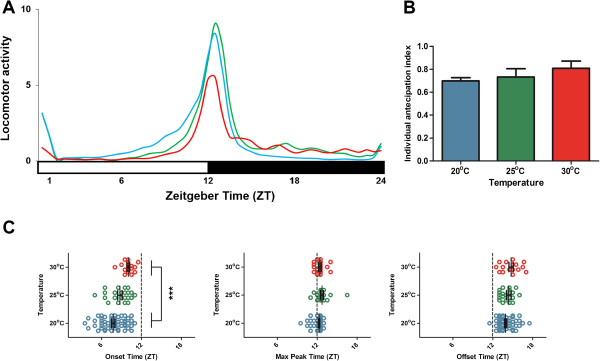Figure 1.

Daily activity profile of L. longipalpis under LD12:12, but combined with three distinct constant temperatures. (A) Average locomotor activity over all sandflies submitted to two days of 20°C (blue lines, n = 56), 25°C (green lines, n = 22) and 30°C (red lines, n = 17). The horizontal white bar indicates the light phase, while the black bar indicates the dark phase. ZT is the Zeitgeber time within a light/dark cycle experiment; ZT 0 corresponds to the lights-on event and ZT 12 to the lights-off event. (B) Mean ± SEM (vertical bars and lines, respectively) of individual anticipation index of L. longipalpis (see Methods) for each temperature condition. (C) Differences of dusk-related onset, maximum peak and offset of locomotor activity for each temperature condition. Mean ± SEM (vertical lines) and individual sandfly (circles) in Zeitgeber time (ZT). Lights on/off (‘dusk’) transitions are indicated by vertical dotted lines at ZT 12. ***p < 0.001; one-way ANOVA, Bonferroni’s Multiple Comparison Test (see Table 1).
